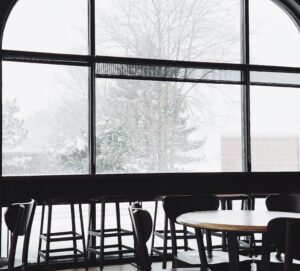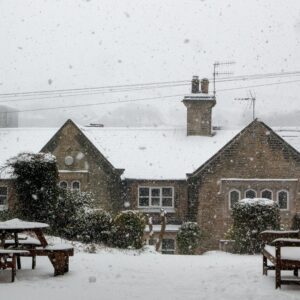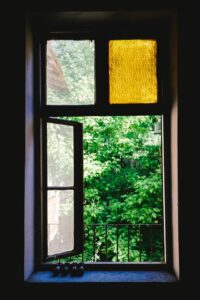 After the double glazing boom of the 1970s, double glazed windows quickly became a commonplace feature within modern homes. Today, it’s only natural that the homeowners that can afford to do so are looking to upgrade their windows beyond standard. The next logical step in upgrading from double glazing is to have triple glazed windows.
After the double glazing boom of the 1970s, double glazed windows quickly became a commonplace feature within modern homes. Today, it’s only natural that the homeowners that can afford to do so are looking to upgrade their windows beyond standard. The next logical step in upgrading from double glazing is to have triple glazed windows.
However, adding extra layers to your windows can only offer so many benefits. The performance of your windows also depends on climate. Rather than jumping straight in and investing in triple glazing without weighing up the pros and cons, this guide to whether triple glazing would work for you can help you decide.
What is Triple Glazing?
If you know what double glazing is already, the term ‘triple glazing’ speaks for itself. Triple glazing features an additional pane of glass alongside the two found within double glazed windows. This creates two gas-filled spaces within the window, rather than one.
Triple glazed windows can offer more insulating impact than double glazed windows can, since the amount of heat that can pass through the window is reduced with each additional layer of glass.
How Does it Compare to Double Glazing?
Cost
When considering the benefits of triple glazing vs. double glazing, cost becomes a significant factor. The cost of any window can vary drastically depending on frame material, size, treatments, and any additional features. The price of standard uPVC double glazed windows is relatively affordable, with the manufacture and installation of a classic casement window costing about £450 on average (as of April 2022). If we imagine an average semi-detached 3-bed home has 9 windows, this will come to £4,050 per home.
Investing in double glazing can end up being cost-effective in the long term. The energy efficient properties of A-rated double glazing windows can save homeowners up to £175 per year on their heating bills.
Taking into account the rising cost of fuel, triple glazed windows may be more cost effective than they once were. The average cost of a triple glazed window is around £550, so for a 9-window house this would be £4,950. Triple glazing is 20% more expensive than double glazing, but is it 20% more efficient?
Climate
The more energy efficient windows are in certain climates, the more money they will save hom eowners. So, climate and cost go hand in hand when considering whether triple glazed windows are worth it. Those countries that have adopted triple glazed windows as standard are also more likely to have more affordable installation options. Scandinavia now uses triple glazing as standard, as consistently cold weather conditions justify the cost of installation and can save more money.
eowners. So, climate and cost go hand in hand when considering whether triple glazed windows are worth it. Those countries that have adopted triple glazed windows as standard are also more likely to have more affordable installation options. Scandinavia now uses triple glazing as standard, as consistently cold weather conditions justify the cost of installation and can save more money.
While it can help retain heat inside, triple glazing also blocks more sunlight and heat from entering the house. This can make your home feel noticeably darker and even chillier than it otherwise would on warmer days.
Security
Triple glazed windows naturally add an extra layer of security to your home than double glazed windows – though double glazed windows are already sufficient to stop most burglaries.
Sound Insulation
The most compelling benefit to installing triple glazing is the extra level of sound insulation it can offer. For those living in high traffic and built-up areas or main roads, that extra layer of sound protection can make all the difference. At a time when many people are working from home, it’s worth considering whether the sound insulating properties of triple glazing would ramp up your productivity levels in your office.
How Much Heat Can It Retain?
The U value of a window can be found on its energy label. Simply put, the u value explains how much heat can pass through a window with ease. The higher the U value, the more heat can escape your home through the windowpanes.
The U value of standard double glazing is ~1.4W/m²k. The U value of triple glazing is ~0.8W/m²k, so less heat can pass through a triple glazed window. Triple glazed windows therefore offer a 5% improvement in energy performance.
The energy performance of your windows alone doesn’t add up to all that much if you’re not investing in retaining heat in the rest of the house. If you are installing triple glazed windows, you might only noticeably benefit from their heat retaining impact if you subsequently insulate the rest of your home to such a high standard. This would incur more costs, further increasing the amount you’ll have to spend to see any returns on your investment.
Do I Need Triple Glazing?
Triple glazing has become a tempting upgrade for those who want to go all out on their property. For example, self-built homes are increasingly using triple glazed windows, as the option to install them from the beginning is there, with no replacement fees involved.
From an energy efficiency point of view, having all your double glazed windows replaced with triple glazed ones won’t make too much of a difference. Having single pane windows replaced with triple glazing is worth it, as triple glazing offers up to 50% more energy efficiency in comparison. In this scenario you could still opt for double glazing, which is almost as effective and quite a bit more affordable.
If tempted by the promise of extra comfort, you don’t have to have a whole house replaced with triple glazing. If you do opt for some triple glazed windows, you can choose to insulate only the rooms that would benefit you most.
What is Quadruple Glazing?
The innovations in double glazing don’t stop at three layers. Quadruple glazing – again, as its name suggests – features four layers of glass with three gas-filled gaps in between them.
The use of quadruple glazing is typically only found within very cold climates that remain at freezing temperatures or in the dark throughout most of the year. This is because the additional layer of glass and gas block the heat from sunlight from penetrating the window, as well as the cold. This can lead to those with quadruple glazing turning on the heating despite an otherwise warm day – reducing the energy efficiency of these windows for plenty of climates.
Windows with up to 6 panes are now available, though whether the benefits of using them will ever justify ever the cost is up for debate.
Verdict: Double Glazing vs. Triple Glazing
Considering climate, energy efficiency, and cost – double glazing remains the most efficient option for those living in the UK. They still allow the heat from sunlight to warm the home, while impressively reducing the loss of heat from within the home on cold winter days.
That’s not to say innovations in triple glazing won’t outshine its predecessor with time. US-based researchers at the Lawrence Berkeley National Laboratory developed what they called the “super window” back in 2018. Their design is a low-E triple glazed invention featuring a super-thin layer of glass as the third pane. They replaced the argon gas between the panes with highly insulating krypton.
It sounds just like a standard triple glazed window – however, these windows weigh almost the same, and are virtually the same dimensions, as their popular double-glazed counterparts in the US. This means only the windowpanes need to be replaced, while the frames can remain, cutting a significant portion from the cost of having triple glazed windows installed. When a great deal of the comparison between double glazing vs. triple glazing concentrates on cost, there is potential for further, more cost-efficient inventions to promote the uptake of triple glazing in the future.
Until then, we’re saving our money and sticking with double glazed! Well-maintained double glazed windows are highly energy efficient, whereas a failed double glazing window can cause up to 30% of heat loss within your home. If your double glazed windows need repairing, get in touch with us at Cloudy2Clear for a free, no-obligation quote. Call our expert team on 0800 61 21 119 to get started.

 Better weather is finally on the horizon in the UK, as we shake off winter storms and a warmer than average summer is forecast in the coming months.
Better weather is finally on the horizon in the UK, as we shake off winter storms and a warmer than average summer is forecast in the coming months.
 Damp can be a common problem in homes throughout the UK, which may be due to our relatively wet climate. In 2021, the
Damp can be a common problem in homes throughout the UK, which may be due to our relatively wet climate. In 2021, the 